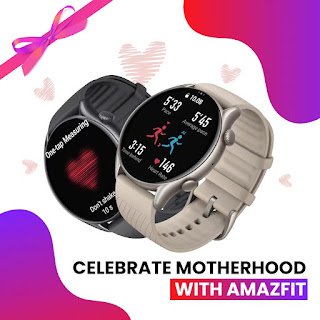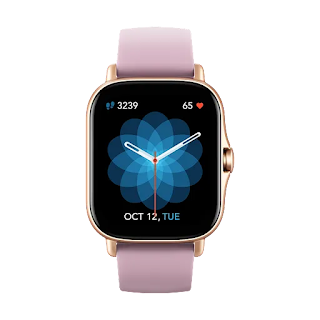How to Compare the Various Women's Smartwatches!
Many fashion-forward companies have created sophisticated and fashionable smartwatches that match any attire. The greatest smart watches for women are discussed in this article's buying guide. Let's start now.
Although telling the time is a
smartwatch's most obvious use, they are far more versatile than that.
They also provide you a lot of access
to your digital world because of how linked they are. Usually, they'll display
your alerts directly from your phone and give you the option to ignore or
respond to them. Some smartwatches will even let you pay for things like you
would with a card or with your phone.
The following are some examples of
what you can often accomplish with these wearables:
- Phone
calls
- Keeping
a step log
- Paying
using a mobile device
- Maintaining
a heart rate monitor
- Examining
your schedule
- Obtaining
and using applications
Here, we've covered a few more
factors that you may use to evaluate different women's smartwatches.
1. Compatible with smartphones
Your experience wearing a smartwatch
may vary depending on the device you're using. Samsung's watches are compatible
with both iOS and Android, although the company warns that if you're using an
iPhone, the smartwatch's functions may be limited. There is also no simple fix
to the Apple Watch's incompatibility with Android devices.
Additionally, certain watches call
for apps that are exclusive to particular iterations of iOS or Android. Before
purchasing a watch, check sure your phone can be updated to the necessary
version if it is out of current.
When shopping for a women's smartwatches, there are a few
things to keep in mind.
2. Battery power
Some smartwatches require recharging
every night to prevent becoming the following day's glossy but useless
bracelet. Before the possibility of experiencing the same destiny ever becomes
concern, others can last for up to a whole fortnight.
3. Resistance to water
The ability to withstand water is
now a prominent selling factor for smartphones, and many smartwatches have
resistance ratings as well. Look for a smartwatch that is certified for water
and sweat resistance because they are regularly exposed to the elements.
4. Connectivity
Smartwatches frequently offer Wi-Fi
connection in addition to Bluetooth, which is how they generally connect to
your device. Look for a wristwatch with LTE if you want to be able to leave
your phone at home and go for a run without worrying about missing a crucial
call or text.
5. Design
Smartwatches come in a variety of
styles. Others have a more conventional watch form, while some have a
rectangular design. Some wristwatches only have a screen and a few buttons,
while others also have rotating bezels.
6. Speakers
It can be helpful to have a
wristwatch with a speaker. If your phone is out of reach or you're in a hurry,
you may still answer calls. Additionally, it implies that you may make calls
from the watch without even lifting up your phone if you're adventurous. You
can even save and play music directly on some smartwatches.
7. Sleep monitoring
Compared to fitness gadgets, women's smartwatches are less likely to
track your sleep, but some watches do. By monitoring your sleep, you can make
sure you're receiving the recommended number of hours and learn more about the
type of sleep you're getting.
8. Monitor of heart rate
Heart rate sensors are found in
several smartwatches. You may ensure that your resting heart rate is good by
using a heart rate monitor to see how much perspiration you produce when
exercising.
9. Fitness monitoring
The majority of smartwatches provide
basic fitness monitoring features like step counting. However, some fitness watches for women come with
even more functions. Some higher-end smartwatches provide features like GPS
tracking, automated workout identification, and sophisticated activity
monitoring.
The majority of companies employ
various smartwatch operating systems from one another. For their timepieces,
several brands develop their own operating system. For instance, Samsung
utilises Tizen whereas Apple employs its own WatchOS. Google's WearOS is
utilised by certain other brands (formerly Android Wear).
Fitness trackers are normally less priced than smartwatches, but smartwatches typically provide more features like app compatibility and mobile payments.



Comments
Post a Comment